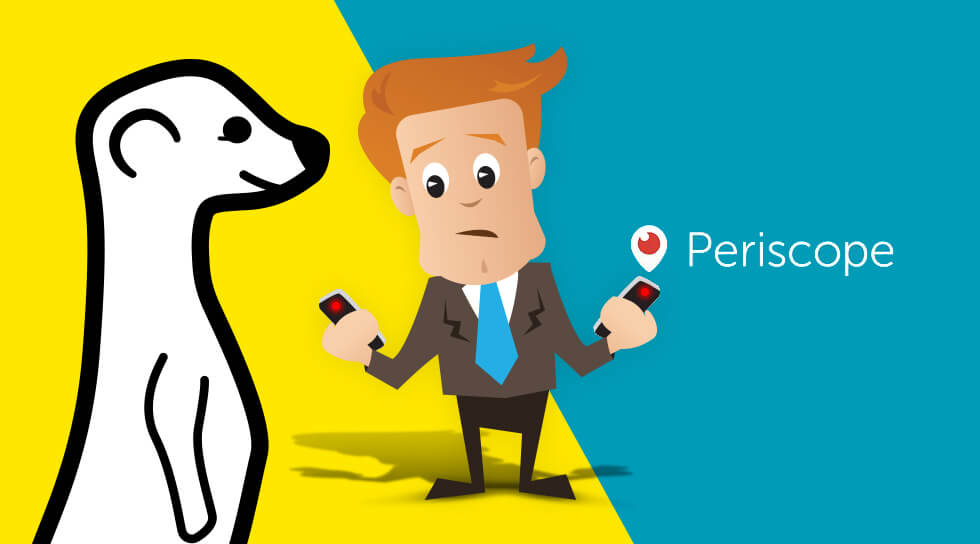How to remove Malware Warning from WordPress Blogs
In order to protect web surfers, Google identifies and blacklist dangerous pages. Popular Web Browsers like Google Chrome, Firefox, Safari etc. use Google’s Malware database to warn their users to keep them away from potentially harmful websites. However, it has
36 Reasons Why a WordPress Website is Better
WordPress got a bad rap when it first came out. Somehow WordPress became known internationally as simply “blog” software. That is soooo limiting to the true power of WordPress. We use WordPress for the entire website…including the blog part. The website you’re on right now is using WordPress. Sure, this is the blog section, but go to any of the main pages you see on the left column and that’s just main website content. Still WordPress. WordPress websites offer much more than the few five or ten benefits you usually hear about. A blogging software-based website is the new evolution of how Web sites are constructed. Before we get into the meat of the actual reasons why WordPress is so great, let’s clear up another myth while we’re at it: A blog is a Web site…a Web site is a blog. There is NO difference. It’s just that blogs have a few more cylinders under the hood, if I were to use a metaphor. In fact, I wrote a blog post a few months ago that suggested your WordPress website is the very heart of ALL of your Internet marketing efforts. I don’t know why the power of WordPress is being so under-rated, because I believe this beloved software has paved the way for a new evolution of websites. Here are 35 reasons why WordPress websites are better than traditional websites for authors, speakers and business owners today in a very trying economy. Save Money – No longer do you need to send the most basic text changes to your designer or even have your designer add new pages for you. Make the edits yourself whenever you want and save the money you would’ve paid your designer for more important things by adding new pages on your own. Times are tight and managing your own content for your Web site is a great way to contribute to saving costs. Greater Accessibility – Make changes or add content from any computer in the world with Internet access and a browser without the need for additional software or fixing firewall settings. Speed of Communication – Since you don’t have to wait a few days for your designer to make those basic changes, the content on your Web site and be altered immediately by you, thereby giving your Web site visitors the most timely and current details possible. Consistency – No matter how many pages you add in page template format makes visitors less confused Better Time Management – Add content and then schedule those posts to publish on your site on whatever day and time you want. You could write an entire 12-week e-course, for example, break it up into 12 pieces and have each automatically post to the site at the same day and time each week for 12 weeks. Ease of Membership Site Rollout – With the addition of a few plugins, a WordPress blog can evolve into a full service membership site with as many levels as you would
Meerkat, Periscope and the Future of Live Video Marketing
With the birth of YouTube, video marketing has quickly become one of the best ways to engage in content marketing. With the rise of mobile usage, video content has evolved so that it can now be created for users on the go through platforms like Snapchat, Vine and Instagram. In the past month, I believe we have reached the next step of video content marketing – with live streaming apps such as Meerkat and Periscope starting to gain widespread recognition. If you are an early adopter or tech savvy, then you probably have heard of one or both of these apps and maybe you’ve already downloaded them as well. The million dollar question, however, is if either Meerkat or Periscope is here to stay and if they have a future as part of a business’ online marketing strategy? Meerkat The first on the mobile live streaming scene with a February 27th launch, Meerkat was the biggest winner of the SXSW conference in Austin, Texas this year, and what really helped it gain steam is when celebrities such as Shaquille O’Neal, Julia Louis-Dreyfus, Madonna, and Jimmy Fallon started using the app. Even widely recognized government figures like Jeb Bush and Mitt Romney took to using Meerkat. Linked through your Twitter account, Meerkat has a very simple and easy-to-use interface that lets you broadcast content immediately or schedule a stream for the future. Once you start streaming, a tweet is sent out to all your followers with a link to your live broadcast. Comments can be made on the video which show up in the live feed and displayed on Twitter as replies to the original tweet with the broadcast link. Trying to capitalize on the immediacy and urgency of live streaming, Meerkat did not create a way for videos to be saved or watched again, so if you miss a broadcast it’s gone forever. Already rudimentary in its features and functions compared to Periscope, Meerkat suffered a minor blow when Twitter (who owns Periscope) removed its ability to sync a user’s’ Twitter followers to the live video platform.To combat this, Meerkat came out with a recent update that has more user options within the app instead of on Twitter that include: At the time of this article, Meerkat is only available for iOS devices and in the Apple Store, but videos are viewable on desktop or laptops as well. Periscope Periscope launched last Thursday, and despite being open to the public for less than a week, is already generating huge publicity and is predicted to overtake Meerkat in terms of adoption. This is because Periscope is owned by Twitter and has more functions and options as a live streaming app when compared to its counterpart. Like Meerkat, Periscope is also synced to Twitter, but comments and interactions during a live video are not relayed and posted back to Twitter. Everything is confined to the privacy of the current live stream instead of being published on Twitter like Meerkat’s citizen journalism approach.
5 htaccess Tricks Every Webmaster Should Know
5 htaccess Tricks Every Webmaster Should Know Here are 5 sets of htaccess directives every webmaster should know: 1 – Redirect Visitors While You Update Your Site Update and test your site while visitors are redirected to the page of your choice: order deny,allow deny from all allow from 123.123.123.123 ErrorDocument 403 /page.html <Files page.html> allow from all </Files> Replace 123.123.123.123 with your IP address. Also replace page.html with the name of the page you want visitors to see. 2 – Display a Custom 404 Error Page Your server displays a “404 File Not Found” error page whenever a visitor tries to access a page on your site that doesn’t exist. You can replace the server’s default error page with one of your own that explains the error in plain language and links visitors to your home page. Here’s how to use your own page: ErrorDocument 404 /404.html Replace 404.html with the name of the page you want visitors to see. 3 – Handle Moved or Renamed Pages You’ve moved or renamed a page on your site and you want visitors automatically sent to the new page when they try to access the old one. Use a 301 redirect: Redirect 301 /old.html http://yoursite.com/new.html Using a 301 redirect also ensures the page doesn’t lose its search engine ranking. 4 – Prevent Directory Browsing When there’s no index page in a directory, visitors can look and see what’s inside. Some servers are configured to prevent directory browsing like this. If yours isn’t, here’s how to set it up: Options All -Indexes 5 – Create User Friendly URLs Which of the two URLs below looks friendlier? http://yoursite.com/about http://yoursite.com/pages/about.html When it comes to URLs, as long as the meaning is clear, shorter is always better. With htaccess and an Apache module called mod_rewrite, you can set up URLs however you want. Your server can show the contents of “/pages/about.html” whenever anyone visits “http://yoursite.com/about”. Here are a few examples: RewriteEngine on RewriteRule ^about/$ /pages/about.html [L] RewriteRule ^features/$ /features.php [L] RewriteRule ^buy/$ /buy.html [L] RewriteRule ^contact/$ /pages/contact.htm [L] Additional Resources There’s a lot more to mod_rewrite and htaccess. Check out the links below for more details and tricks.
How to fix facebook connect error “CurlException: 7”
Many websites with facebook applications, has lately been facing problems with CurlException 7 The problems range from: 1- CurlException: 7: couldn’t connect to host 2- Uncaught CurlException: 7: couldn’t connect to host 3- CurlException: 7: Failed to connect to 2a03:2880:10:1f02:face:b00c:0:26: Network is unreachable The first and second problem are usually more general, and can occur due to many reasons, for example your host might have port 80 or port 443 blocked, and your facebook api will fail to connect. Another reason might be, your cURL php extension is not installed, you can check if you have cURL installed from phpinfo(); <?php phpinfo(); ?> If you have access to your server through SSH, you can always install or compile curl (php-curl). Also, make sure to check your firewall settings, sometimes your firewall might be blocking some ports or applications, and your script will fail to connect to facebook. In the 2nd reason (Uncaught CurlException: 7: couldn’t connect to host), notice how it says “Uncaught”, how dangerous is that? First it means that your code is not using exception handling by surrounding the code with try and catch. Secondly when the error occurs, your website will either not load and show this error, or it will load and show the error, and the facebook action will remain incomplete. Thirdly, it will most probably show the file from where the error occurred, which is insecure and can render the website vunlerable to attacks. So basically, always make sure to surround your code with try and catch, for example: <?php $facebook = new Facebook(array( ‘appId’ => ‘myFbID’), ‘secret’ => ‘myFBSecret”), ‘cookie’ => true, )); try { $me = $facebook->api(‘/me’); } catch (FacebookApiException $e) { error_log($e); } ?> In the catch part, it’s always a good idea to write the error to the log file, so that you can keep track of the errors generated and eventually fix them. In the third option (CurlException: 7: Failed to connect to 2a03:2880:10:1f02:face:b00c:0:26: Network is unreachable), the error is usually generated from cURL being unable to connect to an IPv6. Lately, facebook has enabled IPv6 on their opengraph, so when your script is calling the opengraph through the api, your server will attempt to connect to an IPv6, and since some servers doesn’t have IPv6 enabled or supported yet and doesn’t route IPv6 to IPv4, cURL will not be able to connect to the open graph and the error will be thrown. Some solutions can be made to prevent this: If you’re using a new php version, 5.3+, you can force cURL to resolve to an IPv4 instead of IPv6. Note that cURL will always attempt to use IPv6. To force cURL to use IPv4, you can add the following line of code curl_setopt( $ch, CURLOPT_IPRESOLVE, CURL_IPRESOLVE_V4 ); This should tell cURL to use only IPv4 instead of IPv6 when available. However this solution doesn’t work all the time, so another solution could be, even though it’s not a good solution in the long term, is by editing your hosts file. For









 Copyright © 2018 Aeron7 Inc. All rights reserved.
Copyright © 2018 Aeron7 Inc. All rights reserved.